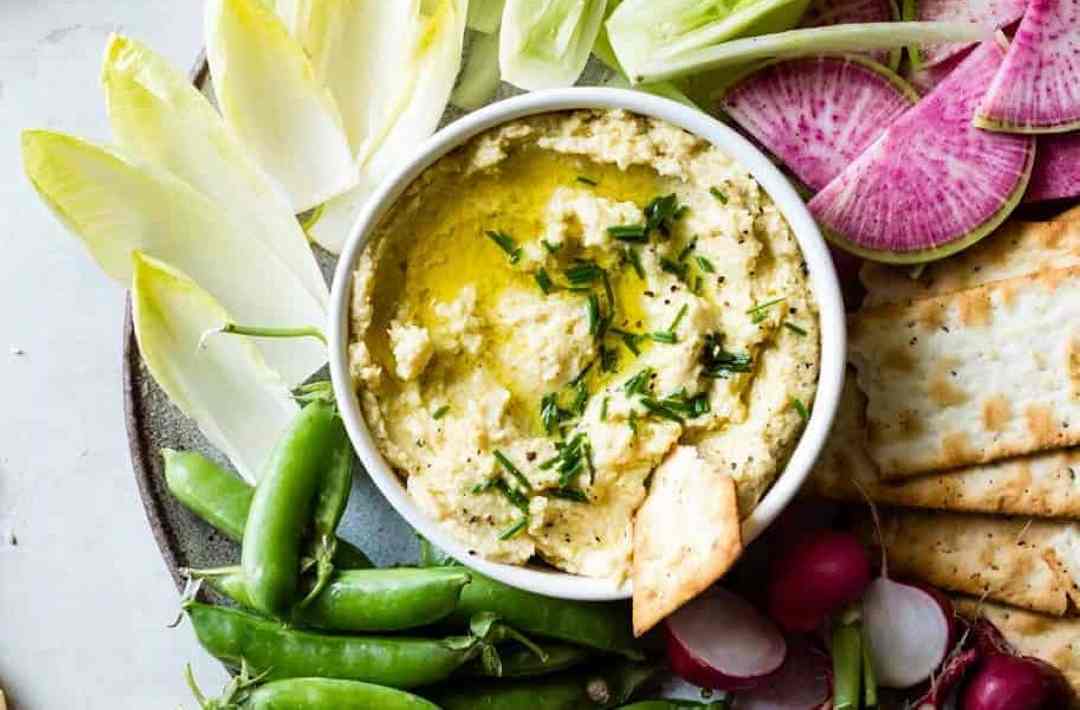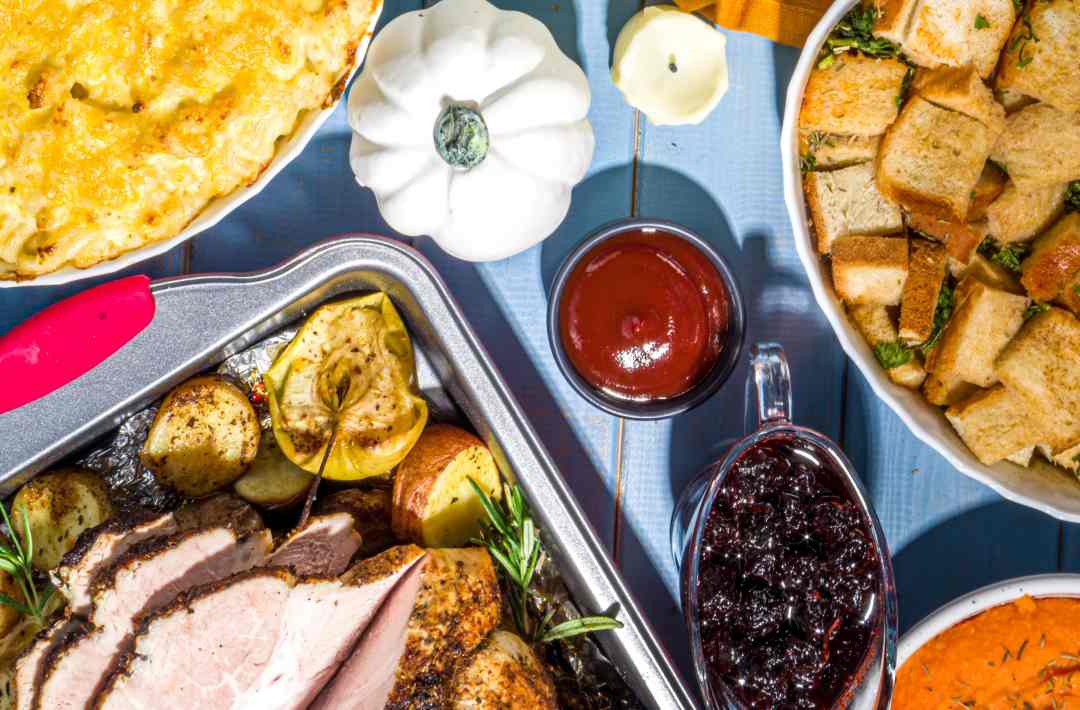

I’m a registered dietitian who chose my profession because I love food. I love thinking about it, talking about it, cooking it, salivating over cookbook photos as I plan to make it…and of course, eating it. You can imagine, then, that a diagnosis of celiac disease—the autoimmune disease that causes gut inflammation when even trace amounts of the gluten protein found in wheat, barley and rye are consumed—would really cramp my traveling style.
You see, there are two types of travelers in this world: those who grab meals to fuel their excursions to museums, landmarks, and must-see attractions, and those who visit such tourist attractions solely to kill time until it’s socially acceptable to have another meal.
I fall into the latter camp. On my honeymoon to southern France, my husband and I built our entire itinerary around which restaurants we wanted to visit—and then worked our way back to figure out what might be of interest to see in the surrounding towns.
I was diagnosed with celiac disease in my early 30s, and I’ve been living with it for over a decade. Being a foodie actually helped me adjust well to the gluten-free diet when on my home turf, as my inclination was to explore global cuisines, ingredients, and cooking techniques beyond those wheat-based ones I had been relying on. Rather than mourn the loss of bagels, I tried to embrace my new dietary reality with the appetite of a traveler encountering a brand new food culture. I tinkered with recipes for my favorite comfort foods like matzoh ball soup and banana bread until I had recreated them successfully with gluten-free ingredients; I experimented with baking traditional Italian polenta (cornmeal) cakes and French teacakes made with almond flour; and sought out New York City’s best South Asian and Mexican restaurants, where gluten-containing ingredients like wheat flour and soy sauce are naturally absent from most menu items.
Traveling, however, was another story entirely.
Without the fallback of my own kitchen, a familiar landscape of big-city restaurants whose menus I’d already vetted for suitability, and the ability to communicate with restaurant servers in my native language, maintaining my strict gluten-free diet was no longer so simple. And since food had always been such a central part of my travel experience, I found myself with a serious case of FOMO each time those around me got to partake in a local delicacy that was off limits to me. To be clear, I recognize that in the grand scheme of problems, this does not qualify as anything other than a pretty OK problem to have and I consider myself very fortunate to be able to travel anywhere at all! But still, traveling with celiac disease, compared to traveling before I developed the condition, certainly felt diminished.
One of the ways I went gluten-free while traveling in Germany was to just skip the breads and buns.
Tamara Duker Freuman, M.S., R.D., C.D.N.
Looking back, I classify my travel life into two distinct eras: B.C. (“Before Celiac”) and A.D. (“After Diagnosis”). In the B.C. era, I sampled Egypt’s macaroni-based national dish called koshari; ate my weight in Turkish baklava; slurped spaghetti in Rome and nibbled almond croissants in Paris; sprinkled malt vinegar on my fish ’n’ chips in London and downed a proper pint of Guinness in Dublin; dragged pillowy fresh pita through creamy hummus in Amman and sampled za’atar spice–topped flatbreads in Beirut. There was flaky spanakopita in Athens and crepes stuffed with tuna, egg, and spicy harissa in Tunisia. In Sydney, I grabbed savory hand pies for a quick lunch, in Argentina I treated myself to dulce de leche–stuffed cookies called alfajores, and in Thailand I enjoyed every manner of stir-fried noodle bathed in dark soy sauce. Of course, I have no idea whether there would have been equally delicious gluten-free options in these places, as I had no need to seek them out at the time.
In the A.D. era, I’ve missed sampling many of the regional specialties for which my destinations are known. I had to take a hard pass on couscous in Morocco—along with the country’s signature flaky-crusted, sweet-savory chicken pie known as b’stilla. The giant potato pancake called rösti that Switzerland is famous for? Half the places I visited used flour to hold theirs together. When visiting Spain for a wedding, my husband dunked churros (cinnamon doughnut sticks) in his hot chocolate, lunched on baguettes lined with the country’s famous jámon Ibérico (cured ham), and sampled every variety of tapas on bread known to man. I basically subsisted for a week on tortilla española—a plain egg and potato omelet. Traveling with celiac disease kind of sucked a little bit.
Of course, necessity is the mother of invention, and over the years I’ve figured out ways to find my piece of yum when traveling in the A.D. era.
I typically hit a supermarket on day one of arrival so that I can procure breakfast essentials—namely a loaf of gluten-free bread or crackers, plus an interesting local schmear to top it with. Breakfast is often the hardest meal to navigate for gluten-free travelers, particularly in Western countries, since it’s so often based on breads and pastries. My B.Y.O.B. policy is “Bring Your Own Bread,” and I have no qualms about smuggling a gluten-free loaf into some of the finest restaurants just so I can sample their world-class butters. To console myself for the many foods I have to pass up, I make sure to eat ice cream almost every day. After all, I was not put on this earth to suffer the indignity of watching everyone else enjoy dessert without me. And a few times, I’ve sought out English language cookbooks from restaurants I visited so that I could try to adapt gluten-free versions of their specialties that I missed.
My other go-to for gluten-free dining when I was in Germany: a potato with sour cream.
Tamara Duker Freuman, M.S., R.D., C.D.N.
Most Popular
- 5 Less Obvious Signs of Seasonal Depression You Should Definitely Pay Attention To
By Maggie O’Neill
- 42 Creative Valentine’s Day Gifts for Guys
By Sarah Madaus
- Just Some Fun Sex Toys You and Your Partner Will Love
By Gabrielle Kassel
It was against the backdrop of dashed international food fantasies that I entered my latest trip abroad—this time to Stockholm, Sweden. We were flying there after spending a week in Hamburg, Germany, where I watched my family devour fresh pretzel bread and apple strudels from the city’s ubiquitous bakehouses, delight in spätzle (German egg noodles), and tuck into slabs of breaded wienerschnitzel. Compared to previous trips to Germany that I’ve taken, I did notice that this time around, there was widespread labeling of allergens on all restaurant menus—including gluten. But this only resulted in the confirmation of what I already knew: My restaurant options were essentially limited to salads and baked potatoes smothered in sour cream. Each restaurant chalkboard that featured the day’s specials followed by a cheery “Guten Tag!” (“Good Day!”) looked like it was mocking me with a sneering “Gluten Tag.”
Heading to Sweden after that week in Germany, I dared not bother to seek out destination restaurants as I’d done in the past, and focused my planning efforts on finding fun activities for the kids instead. I already figured that Swedish meatballs with gravy would be off-limits to me, and the siren call of the country’s signature cinnamon buns would remind me of yet another unrequited pastry love. But when I arrived, I quickly realized that there is at least one place on the planet where foodies with celiac disease can dare to dream big, indulgent food dreams again…and that place is Stockholm.
A basket of the crispbread Scandanavia is known for, gluten-free edition!
Tamara Duker Freuman, M.S., R.D., C.D.N.
I suppose I shouldn’t have been too surprised that Stockholm was a veritable oasis for gluten-free foodies. About 2 percent of Sweden’s population is affected by the condition, which is about double the average of most western countries. And the country takes celiac disease seriously: According to Elin Lustig, a Swedish dietitian who sees several patients with celiac disease every week in her Gothenburg-based practice, the Swedish government provides $5,000 to kids covered by certain insurance when they are diagnosed with celiac disease.
Most Popular
- 5 Less Obvious Signs of Seasonal Depression You Should Definitely Pay Attention To
By Maggie O’Neill
- 42 Creative Valentine’s Day Gifts for Guys
By Sarah Madaus
- Just Some Fun Sex Toys You and Your Partner Will Love
By Gabrielle Kassel
By way of comparison, in the U.S., celiac disease affects about 1 percent of the population—a prevalence that’s only half as high as Sweden’s. And those of us who do have the condition are not receiving any gluten-free swag from Uncle Sam, our insurance companies, or anyone else for that matter. Still, the gluten-free diet has been fashionable in the U.S. for years, and frankly, I’m used to having a reasonable number of gluten-free dining options as someone who works in New York City. So what was so different—and impressive—about eating out in Stockholm?
For starters, there was the extent to which awareness of allergens—particularly gluten—seemed to be woven into Stockholm’s restaurant culture, from signage and staff training at foodservice establishments to menu selection and food quality.
You notice the difference immediately upon approaching a restaurant counter or receiving a menu. Practically everywhere we dined had some sort of signage in Swedish (and often English as well) with a version of this message: “Allergies? Ask us!” As a diner with a food restriction, this made me feel as if requesting gluten-free foods would not be viewed as an inconvenience (or worse—as a completely alien request). While many menus clearly indicated which dishes contained gluten already, in situations where this was not the case, I needn’t have worried. Every single restaurant server or food court counterperson I asked was immediately familiar with the specific menu items that were gluten-free—and which could be modified to become gluten-free. Lustig attributes this high level of awareness to a 2014 European Union law requiring that restaurants label gluten-containing foods as such, or be prepared to address allergen information verbally when asked (until then, only prepackaged foods were required to be labeled with allergen information).
But it was more than just labeling—I seemed to have lots of gluten-free options to choose from even though I wasn’t specifically seeking out celiac-friendly restaurants.
Beyond the ease with which I was able to navigate the gluten-free options on restaurant menus with confidence, there was an additional factor that elevated my dining out experience in Stockholm beyond anything I’d experienced on my home turf of New York City, or, as I’d seen in Germany, other EU countries who abide by the same law: The variety of the gluten-free options available. While an international city like Stockholm offers ample access to many world cuisines that are naturally easy for gluten-free eaters to navigate, it seemed to me that restaurants went out of their way to formulate items with gluten-free ingredients as a default whenever possible. This meant I was able to partake in foods that are typically off-limits to me at home.
My plate of Swedish meatballs the way they’re intended to be enjoyed (with gravy, mashed potatoes, lingonberries, and pickled cucumber), all gluten-free.
Tamara Duker Freuman, M.S., R.D., C.D.N.
Most Popular
- 5 Less Obvious Signs of Seasonal Depression You Should Definitely Pay Attention To
By Maggie O’Neill
- 42 Creative Valentine’s Day Gifts for Guys
By Sarah Madaus
- Just Some Fun Sex Toys You and Your Partner Will Love
By Gabrielle Kassel
For example, restaurant meatballs at home almost always use breadcrumbs as a binder. At Stockholm’s Meatballs for the People restaurant, however, they had two varieties of gluten-free balls on offer the day I ate there—reindeer and moose, as it turned out. (I opted for the reindeer.) At this particular establishment, I was assured that the gravy, too, was gluten-free, which meant I was able to partake in the full experience of a traditional meal: Meatballs, mashed potatoes, gravy, lingonberries, and pickled cucumber. It was absolutely delicious. (Because most gravies are made with flour and I cannot vouch for whether this restaurant’s gluten-free recipe is in any way standard practice in Sweden, it’s best to always ask and verify!)
And lest you think that gluten-free eaters would be excluded from the crispbread culture that Scandinavia is known for, I encountered a separate basket of gluten-free crispbreads alongside the conventional option in the cafeteria of the Wasa museum—a well-visited tourist attraction that showcases a giant, ill-fated wooden ship dating back to the 1600s. To be clear—I did not seek out any of these establishments based on advance research into whether they offered having gluten-free friendly dining options. Encountering them was complete happenstance—which, to me, suggests how commonplace they are.
I reached out to Stockholm-based dietitian Jeanette Steijer to reality-check my impression of Stockholm as an especially celiac-friendly city. Beyond the legal requirements for restaurants with regard to labeling allergens, Steijer attributes much of the widespread availability of gluten-free menu items to the convergence of two cultural factors. First, that inclusivity in hospitality and sharing meals is a strongly held value in Swedish society; and second, that people there are very tuned into to new trends—including especially those exported by the U.S, where gluten-free lifestyles even for people who do not have celiac disease have become very fashionable. “Awareness of gluten-free diets is much higher now than it was even three to five years ago,” she explained to me by telephone, “and options for gluten-free eaters at both restaurants and in packaged foods have expanded and improved a lot.” Lustig echoed this sentiment as well, commenting that “restaurants are eager to be inclusive to all so that there need not be special, separate gluten-free menus.” While she notes she’s been seeing more naturally gluten-free options like quinoa, potatoes, and low-carb entrees in the past few years than before, she cautions that that gluten-free food may still be harder to come by outside of the major urban areas of Stockholm, Gothenburg, and Malmö.
Even with the increased awareness of the gluten-free diet among restaurants, both Lustig and Steijer question to what extent restaurants are accurately labeling menu items or taking measures to prevent cross contamination for diners with celiac disease. The allergen labeling laws do not specify how restaurants must handle education and training of staff, which means it is likely to vary in consistency. Lustig explains that the Swedish Celiac Society does a fair amount of education and outreach to restaurants and other institutions to help them make more inclusive menus and educate them on cross-contamination, but nonetheless she continues to caution her patients to question restaurant staff as to the specific ingredients of dishes labeled gluten-free just to be safe.
The cherry (gravy?) on top of my gluten-free foodie adventure in Sweden, however, was the quality of the gluten-free bread.
Gluten-free breads in the U.S. are pretty lousy; they’re often either dry or cardboardy in texture—or incredibly dense and brick-like. Packaged American gluten-free breads almost universally need to be toasted to be edible, and even those that are palatable when toasted are offered in a limited set of varieties: white, multigrain and cinnamon raisin. Before my trip to Sweden, the last time I had a tangy piece of sourdough bread was over 12 years ago.
Most Popular
- 5 Less Obvious Signs of Seasonal Depression You Should Definitely Pay Attention To
By Maggie O’Neill
- 42 Creative Valentine’s Day Gifts for Guys
By Sarah Madaus
- Just Some Fun Sex Toys You and Your Partner Will Love
By Gabrielle Kassel
A typical gluten-free breakfast at my hotel.
Tamara Duker Freuman, M.S., R.D., C.D.N.
But in Sweden, gluten-free breads seem to be formulated with the same expectations of quality as conventional breads—their texture, flavor, and variety far surpassed anything I’ve experienced here in the U.S. There were the fresh-based buckwheat rolls offered by a bakery café just a few blocks from my hotel, and a heavenly gluten-free sourdough bread I was able to get as the base for my eggs florentine at a trendy brunch spot, Greasy Spoon. Even a randomly selected package of supermarket bread was far and away better than even my favorite American brand of gluten-free bread. Soft, moist, and hearty, the Lingonberry and Cranberry loaf by Fria was studded with dried fruit and sunflower seeds and was a delicious base for smorgasbord staples like butter, sliced cheese, and meats offered at my hotel’s daily breakfast buffet. (Though of course it’s worth noting that my hotel did offer a different variety of Fria’s gluten-free bread on request, and the staff—unprompted—even offered to bring it to the kitchen to toast separately in the oven for me to ensure I avoided cross-contamination in the communal toaster.)
Needless to say, my delicious trip to Sweden left a very pleasant aftertaste, and I’m already trying to come up with a good excuse to return. Spending time in Stockholm was a true vacation from the excessive worry about eating out that I usually have. And if you are planning a trip and don’t mind, could you swing by a supermarket on your way home to snag me a loaf (or three) of Fria bread? There are a few varieties I’d still like to try.
Tamara Duker Freuman is a New York–based dietitian whose clinical practice focuses on the dietary management of digestive and metabolic diseases. While she works with patients who have a variety of health issues, her expertise is in helping identify the many possible causes of gas, bloating, diarrhea, and constipation, and helping patients achieve symptom control and improved quality of life. Because of this expertise, she has been called “The Bloated Belly Whisperer,” and she liked the name so much she made it the title of my first book. Follow her on Twitter here and on Instagram here.
















